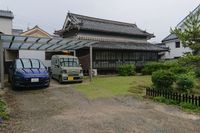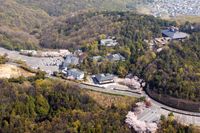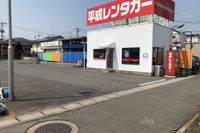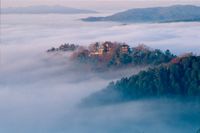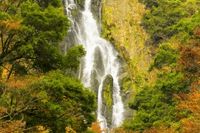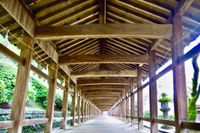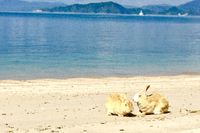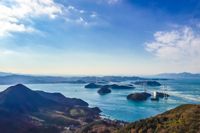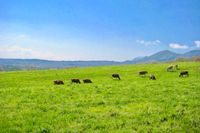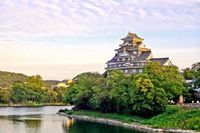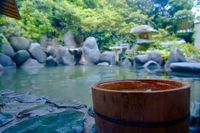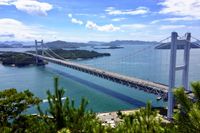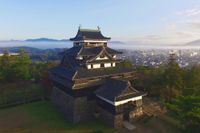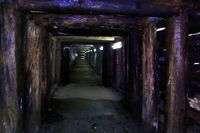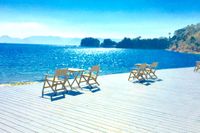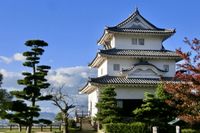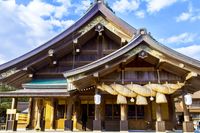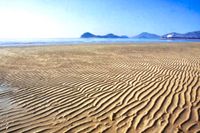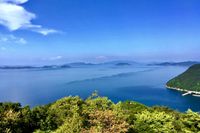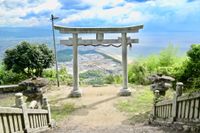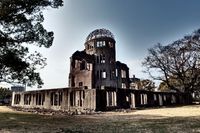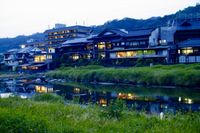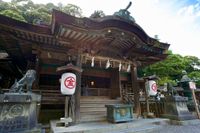Taishakukyo Gorge
広島県/神石郡神石高原町

Description
This is a canyon of 18 km in length in the eastern part of Hiroshima prefecture. It is famous for its natural bridge, Onbashi, formed by the erosion of limestone over the years by river water. In addition, in Lake Shinryu, there are numerous stunning views such as the greenery in spring, the autumn leaves, and the numerous water birds that inhabit the area.
Homepage
Address
Nearby Car Night Spots
Nearby Activities
There is no nearby activities
Ranking Stations
Vanlife BASE | 45 min. from Narita Airport / Perfect for campervan travel/A seaside town rich in nature/Japanese countryside town/welcome traveler
¥7,000〜
/ per nightChiba Koseki, Kujukuri-machi, Sambu-gun
5.0
(61)(Bonfire BBQ) Chita Mihama Noma Beach Station
¥3,500〜
/ per nightAichi Noma, Mihamacho, Chita County
4.7
(42)Shin Meishin Suzuka PA (inbound) RV Station Suzuka * With Power!
¥2,200〜
/ per nightMie Yamamotocho, Suzuka-shi
4.3
(156)Nearby Drive Spots
Bitchu Matsuyama Castle
This is a castle built in 1240 by Akiba Saburo Shigenobu. It is situated at the top of the 430 meter tall Mount Gagyu, and among Japan's remaining castle towers, is located at the highest location in Japan. During the battle of Bicchu in 1574, the large castle walls were built, and became a great fortress stronghold. During the months of October to April, it is possible to see the clouds below, giving it the alternate nickname of "The heavenly castle".
Kanba Falls
This is a waterfall in central Okayama prefecture. It has a height of 110m, making it the highest in Western Japan. The area is also habitat to wild Japanese monkeys. The area is also popular for autumn leaf (momiji) viewing.
Kibitsu Shrine
A shrine whose construction date is unknown. The main shrine God is known as Ookibitsu no Mikoto, and was revered as the great shrine of the Kibikuni area (which included Okayama, Hiroshima and parts of other areas). Ashikaga Yoshimitsy, who instructed the construction of the shrine, is said to have used the "Hiyoku Irimoya Zukuri" style, which a traditional Japanese Shinto architectural style characterized by four dormer gables, two per lateral side, on the roof of a very large main shrine. The place was designated as a national treasure and is famous for its 398 meter long passageway It is also famous for being the setting of the legend of "Ura Taiji" featured in Japanese folt tale "Momotaro(The peach boy)".
Okunoshima Island
This is an island of Hiroshima in the Seto Inland Sea. It is famous as the only island that is home to a factory producing poisonous gases, and is home to around 700 rabbits that had previously been used for scientific experiments. It is a well known tour spot with plentiful facilities including a camping area, leisure facilities and onsen.
Setouchi Shimanami Kaido
This is a road of 59.4 km connecting Hiroshima Onomichi City and Imabari City in Ehime prefecture. There are six large islands in the area, which is also known as "the Bridge art museum" as ten bridges are linked here. It is popular as a cycling road, and bicycles can be rented here.
Hiruzen Kogen
This is a highland area in Norther Okayama prefecture of an altitude of 500-600 meters. It has Japan's largest jersey cow field as well as numerous camping facilities, and attracts many visitors that wish to escape from the heat. It is said that the area inhabits a ghost known as "Suiton" which is said to appear, and statues of it exist around the area.
Korakuen Garden
This is one of Japan's three great parks, created in 1700 under the instruction of Ikeda Tsunamasa, as a representation of the "Genroku" culture of the Edo period(1603-1868). The garden has the "Enyotei" area as the center of the garden, where views of Okayama Castle and the surrounding area can be enjoyed. The park boasts an area of 133,000 square meters, with many amazing sites such as a Noh theatre stage, Mount Yuishin, a plum grove as well as Chishio forest.
Tamatsukuri Onsen
This is an onsen in the northern part of Shimane prefecture. It has 1300 years of history, and was registered as a "Kami no Yu" (God's hot spring) by the Izumo Kuni Fudoki (which is an ancient report on provincial culture). The area has been historically famous for the three sacred imperial treasures, which includes various jewelry items which were made in this area. Along the Tamayu River, there are lines of cherry blossom trees, as well as "Sukiyazukuri" (a refined, well cultivated traditional Japanese architecture style) Japanese Ryokan, which creates a calm and stately atmosphere.
Mount Washu
A 133m high mountain situated in Kurashiki City. Facing the Seto Inland Sea, it has an observation platform with views of the entire Great Seto bridge as well as numerous islands. It was named due to its resemblance to an eagle spreading its wings There is an ancient tomb between the middle of mountain and the summit which is a particular highlight.
Matsue Castle
This is a castle built in 1611 under the instruction of Horio Tadauji. It is one of the 12 remaining castle towers, and also one of Japan's best 5 castles. The castle tower is situated on a small mountain, 29 meters in height, where Lake Shinji can be viewed from the top. The castle roof tower design has four such roofs stacked on top of each other in a staggered fashion, facing north, south, east and west, resembling the open wings of a thousand birds, which has given it its alternate moniker of "Chidori Castle" (Thousand bird castle). 松江城 © 島根県 クリエイティブコモンズライセンス(表示4.0 国際)https://creativecommons.org/licenses/by/4.0/
Iwami Ginzan Silver Mine
This is Japan's largest silver mine, located in Shimane prefecture, and is a world heritage site. It is said that from the Sengoku to the Edo era(1467~1868), that this mine produced one third of the world's silver. The area is characteristic for its environmentally friendly approach to the surrounding area, which ensures minimum damage to mountains, no cutting of forests or digging narrow tunnels or other mining.
Naoshima Islands
This is an island in Kagawa prefecture, that is situated in the Setouchi coast. This island is in fact famous for art exhibits, and hosts many art museums and exhibits, such as the "pumpkin" exhibition of Kazuyo Kusama, and attracts many art enthusiasts from around the world.
Marugame Castle
This is a castle which was built in 1602 by Ikoma Chikamasa. It is one of Japan's 12 remaining castle towers, and is famous for being built on Japan's tallest castle stone hill of 66 meters, giving it the name of the "stone castle". Visitors can also see a wooden model of the castle which was originally created as a proposal submitted to the Edo Bakufu Shogunate.
Izumo Taisha Shrine
This is Japan's oldest shrine, built before 0 BC. It is said that that it houses the great God Okuninushi no Mikoto, which is said to have surrounded the country to the God Amaterasu. On Kannazuki (October) all of the 8 million Gods, (excluding the two aforementioned Gods) are said to gather at this place and hold a ceremonial discussion regarding the destiny of the humans on the planet. For this reason, it has been revered and worshipped as a place of good fortune since its inception.
Chichibugahama Beach
This is a sandy beach facing the Setouchi coast in the western part of Kagawa prefecture. With its stunningly clear salt waters, it is known as the "heavenly mirror" as it is an ideal photo spot to take a picture of a landscape, with it faithfully reflected by the sea. This has made the area particularly popular for photographers, as well as holidaygoers who visit the area in the summer for beach and water activities.
Goshikidai Plateau
This is a mountain that protrudes out into the Setouchi coast, located in Kagawa prefecture. The name originates from a Chinese legend, and there are five mountains named with the colors of red, yellow, blue, black and white, hence the name "Go-iro" which means "5 colors". The Shiromine Temple and Negoro Temple, which were recognized by the Japanese poet and author Kukai as one of the "88 holy places of Shikoku" is also nearby. The mountain and coastal area also give way to stunning views.
Takaya Shrine
This shrine hosts the Gods known as Ninigi no Mikoto, Ukemochi no KamiKonohano-sakuyahime no Mikoto, with the main shrine hall at the top of the 407 meter Mount Inazumi. Its construction date is known. From the top area (which is 270 steps up) visitors can see views of the whole of Kannonji Temple along with the Setouchi coast, which has given the shrine the alternate moniker of "The heavenly Torii gate". Night views are equally as stunning, drawing numerous photographers to the area regardless of the time of day.
Atomic Bomb Dome
This building was the victim of the world's first atomic bomb during the World WarⅡ. It was originally opened as an establishment to display products of the prefecture. The bombing on August 6th led to the tragic destruction of 13.2 million square meters of land, a death toll of about 140,000 people, and is registered as a World Heritage Site in commemoration and remembrance of the tragedy, with the wish that such a tragedy will never happen again.
Misasa Onsen
This is a hot spring in the centre of Tottori prefecture. With 900 years of history, the onsen was loved by writers such as Yosano Akiko, Nogushi Ujo and Shiga Naoya. The area was known as a place of healing - so much so, that it was known as the place "where illness disappears by the third day of being here". Along both sides of Mitoku River, there are various traditional Japanese Ryokan, making this a popular onsen town to experience the nostalgia of the Japan of times past.
Konpira Shrine
This is the main shrine of the Konpira Shrine group, but its construction date is not known. It hosts the Gods known as Oomononushi no Mikoto and Emperor Sutoku, and is particularly revered by fishermen and mariners, due to the temple Gods acting as protectors for those at sea. The shrine has enjoyed popularity due to its unique souvenir of a gold emblem being imprinted onto a circular trinket. The path up to the temple is long, with 1368 stone steps.

